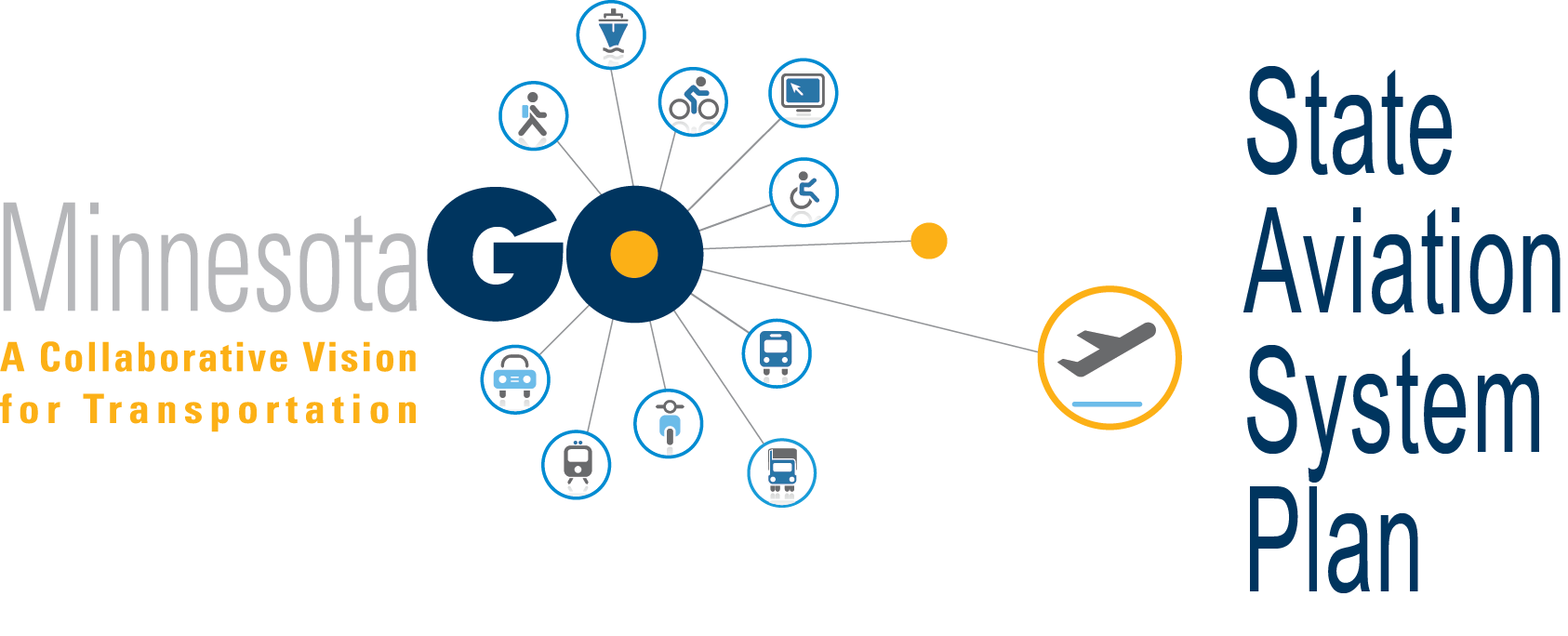State Aviation System Plan

Gov. Tim Walz officially approved the Minnesota State Aviation System Plan (MnSASP) in September 2023. The MnSASP is our long-term strategic plan, designed to provide a description and assessment of the airport system’s current performance, as well as guidance for future development.
The MnSASP is part of MnDOT’s Family of Plans, which stem from the Minnesota GO 50-year Vision. The vision outlines what Minnesotans desire from the state’s transportation system and identifies key guiding principles we strive to achieve.
MnSASP Hub
As part of the system planning effort, the MnSASP developed the MnSASP Hub as an interactive web application to maintain and report all data collected during the plan to support various MnDOT Aeronautics’ functions. The data presented in the MnSASP Hub include all performance measures and indicators defined in the 2022 MnSASP (refer to Chapter 2 for more information), economic impact, FAA-filed flight plans, NAVAIDs and weather stations, airfield pavement condition, and airport safety areas (MnDOT clear zones, FAA Part 77 surfaces, runway protection zones [RPZs]). All the tabular and spatial data summarized above are organized and presented in the MnSASP Hub in a combination of interactive Dashboards and mapping applications.

